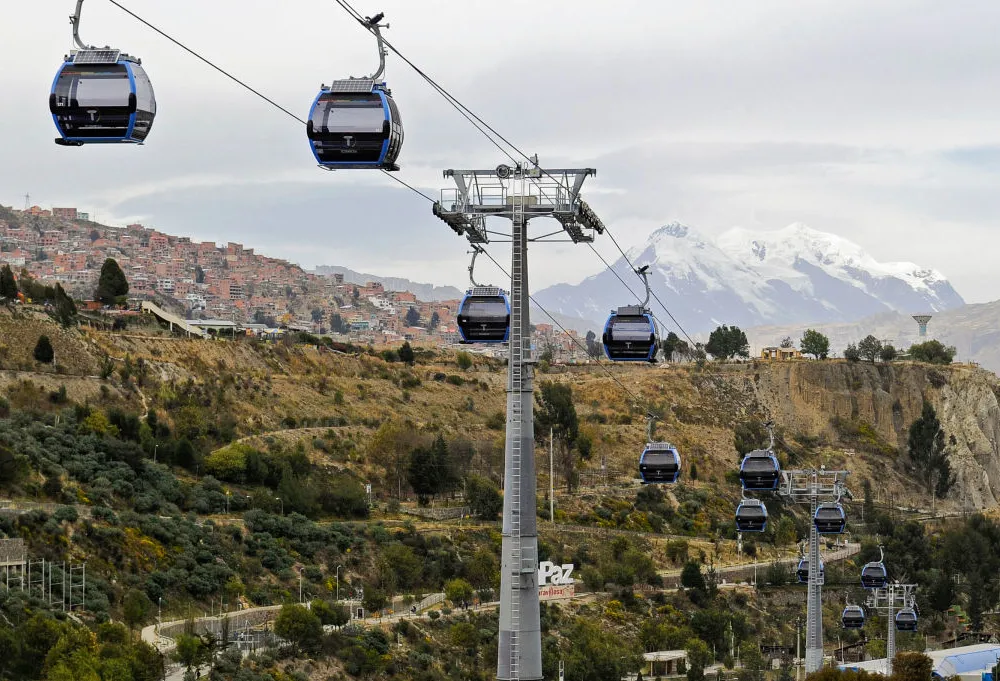The systems have been especially successful in Latin America, where massive cities and dramatic landscapes make building roads, rail lines and subway tunnels difficult. Mi Teléferico, shown here, connects more than two million people across the La Paz metro in Bolivia.
Jorge Bernal/AFP via Getty Images
Cities around the globe have long relied on underground subways, streetcars and buses to ferry people from one neighborhood to another. But a transit revolution is afoot. Urban planners are increasingly discovering that a viable solution to traffic congestion, long commute times and excessive vehicle emissions isn’t found at street level, but higher up. The era of the aerial cable car is officially underway.
“From a public transportation perspective, what people are discovering is that cable car systems are reasonably cost-effective and they are quick to build,” says Steven Dale, principal planner at the civil engineering and transportation planning firm SCJ Alliance in Toronto and creator of the Gondola Project, a blog on the world of cable cars, gondolas, aerial trams and cable-propelled transit systems. “A basic system can be built in a year, and you’re not tearing up an entire roadway or building a massive tunnel. You get all the benefits of linear infrastructure without having to build linear infrastructure.”
Aerial cable car transit isn’t new (and is not to be confused with street-level cable cars like those in San Francisco). The first to carry passengers, the Kohlerer Bahn, opened in the Tyrolean Alps of Italy in 1908 to shuttle visitors to and from a mountaintop inn in Bolzano. Since then, they’ve populated ski resorts and other high-elevation sites, providing a way to bypass steep terrain and give riders the kind of bird’s-eye views no other form of transportation can.
But just because cable cars have historically been associated with tourism doesn’t mean they can’t be used for more practical purposes. Cable car transit has significant advantages over street vehicles in navigating dense urban centers, says Leonard Lee, head of communications at transportation tech company Swyft Cities in Mountain View, California.
“They take up almost no space at ground level, there’s very little infrastructure—you just need a couple poles and to string a cable,” says Lee. “You can…
Click Here to Read the Full Original Article at Travel | smithsonianmag.com…
